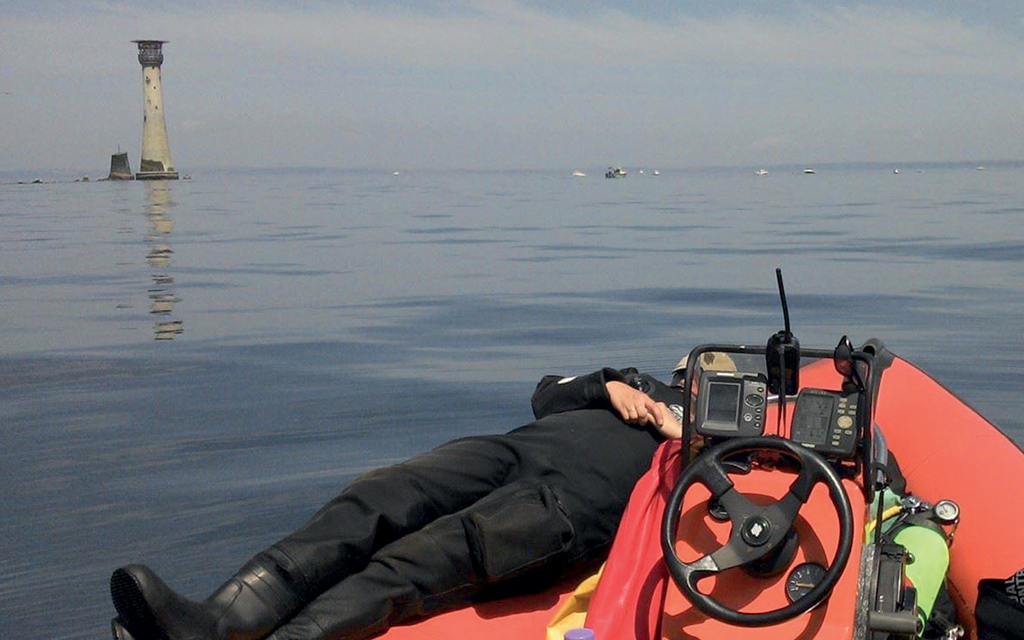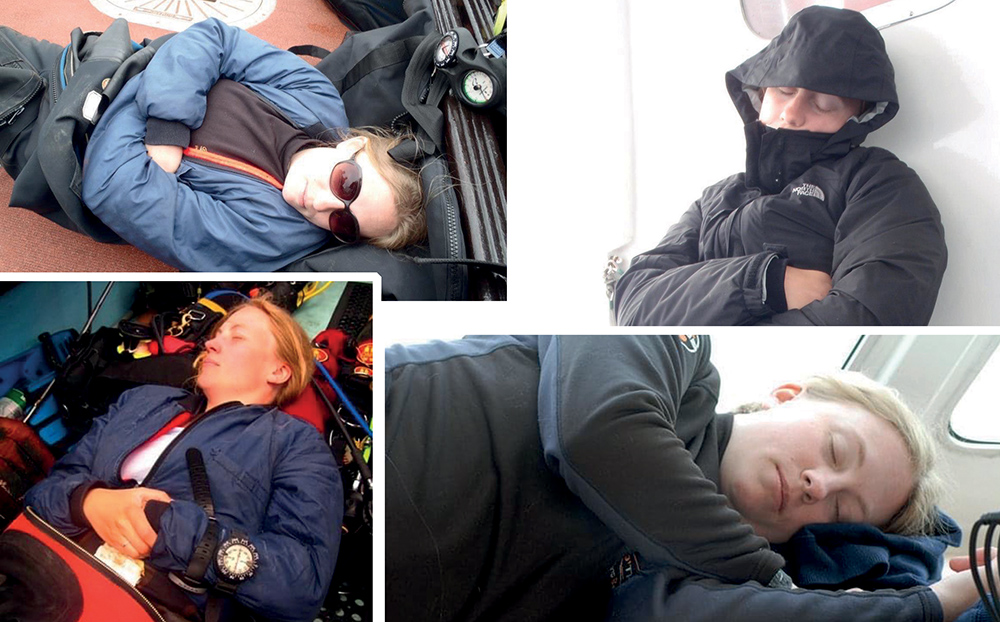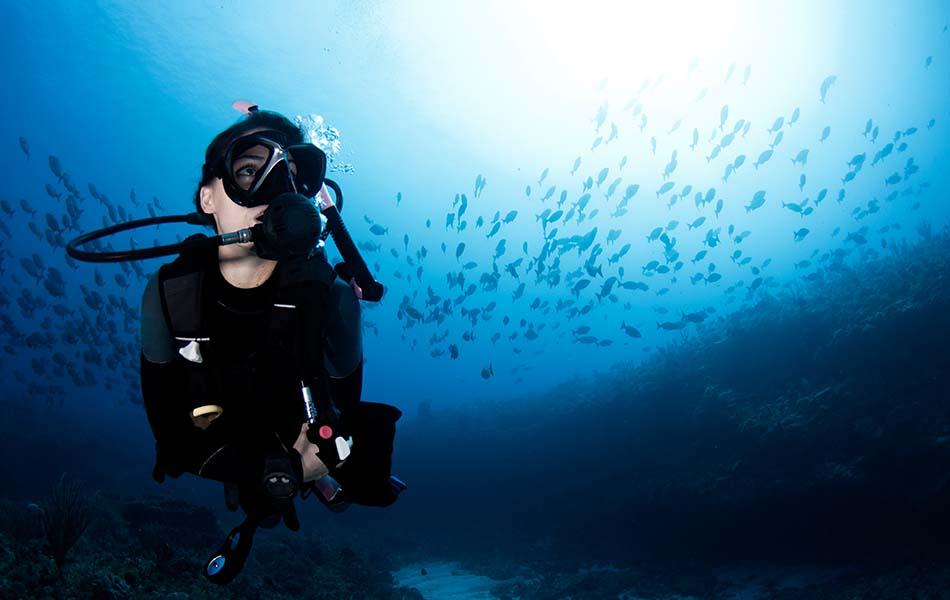
Kirsty Andrews adores a doze on a dive boat, notoriously nodding off on the high seas.
Napping is one of my Top Five Skills. I’m quite proud of it, and it’s stood me in good stead in life so far. Not limited to a diving scenario, I find it almost impossible to resist the Land of Nod when in any kind of moving vehicle, and I put this down to excellent sleep training as a child.
One skipper who’s known me for some years has referred to me as the ‘Ship’s cat’ as I have a habit of finding the warmest sun-drenched spot in the wheelhouse and curling up catlike in it for a snooze in between dives for as long as I can get away with it. I’ve heard it said that the optimal timing for a power nap is between 20 and 30 minutes, which is perfect to fit in during the surface interval. Not very sociable perhaps, but forgive me, dive buddies: I’ll be far cheerier afterwards.
All of us who’ve enjoyed a liveaboard have hit the sundeck (albeit perhaps a safely shaded part) in between dives, haven’t we? But it doesn’t have to be warmth and sunshine: oh no. With my trusty dryrobe, I’m an all-weather snoozer; driving rain or freezing winds - if it’s diveable, it’s nappable. If the wheelhouse is unsuitable, I favour a spot near the stern, curled up in a nest of BCDs and kit bags for ultimate comfort.
I’m an all-weather snoozer; driving rain or freezing winds - if it’s diveable, it’s nappable.
I’ve had reason to be thankful for this sleeping skill on many an occasion. I’m not completely immune to seasickness and I find where there’s a long crossing, be it the Minch or the somewhat more extreme 26-hour crossing to get to the (totally worth it) Revillagigedo Archipelago in Mexico, the best solution for me is to get to my bunk and put my head down until it’s over. I’m not even the best diving napper I know: Marko, your reputation precedes you.
There is though a slightly more problematic aspect to this, potentially. I’m not the only one who feels rather lethargic after a dive and, while I’m no expert myself, studies have been conducted which suggest that post-dive fatigue, lethargy and sleepiness after scuba diving could indicate ‘decompression stress’ in our bodies, or subclinical decompression sickness. Not to an extreme level and not to a point which would require treatment as standard, but something to look out for and monitor, nonetheless.
Nitrox is often cited as a way to minimise this effect, especially where it’s used to add an additional safety factor in a conservative dive profile. While I subscribe to the many benefits of nitrox and use it myself where possible, I’m uncertain whether I personally feel significantly more sprightly after a swig of 32%. Divers have reported feeling more alert after a nitrox dive, but studies conducted to quantify this have so far proved inconclusive. It does promote more efficient off-gassing and reduce micro-bubbles after a dive so I’m certainly still a fan, even if I may still also fit in a nap now and again.

Looking back through my social media feed, several paparazzi-esque buddies have felt the need to photograph my happy dozing moments over the years. There are actually fewer photos than there used to be, so either I’m not dozing as much or it’s so commonplace, they can’t be bothered to record it for posterity any more. I’m sure they’re only jealous of my impromptu siesta skills.
Article ‘Ship’s cat’ by Kirsty Andrews first published in SCUBA magazine, Issue 132, Jan/Feb 2023

 Author: Kirsty Andrews | Posted 24 Feb 2023
Author: Kirsty Andrews | Posted 24 Feb 2023



